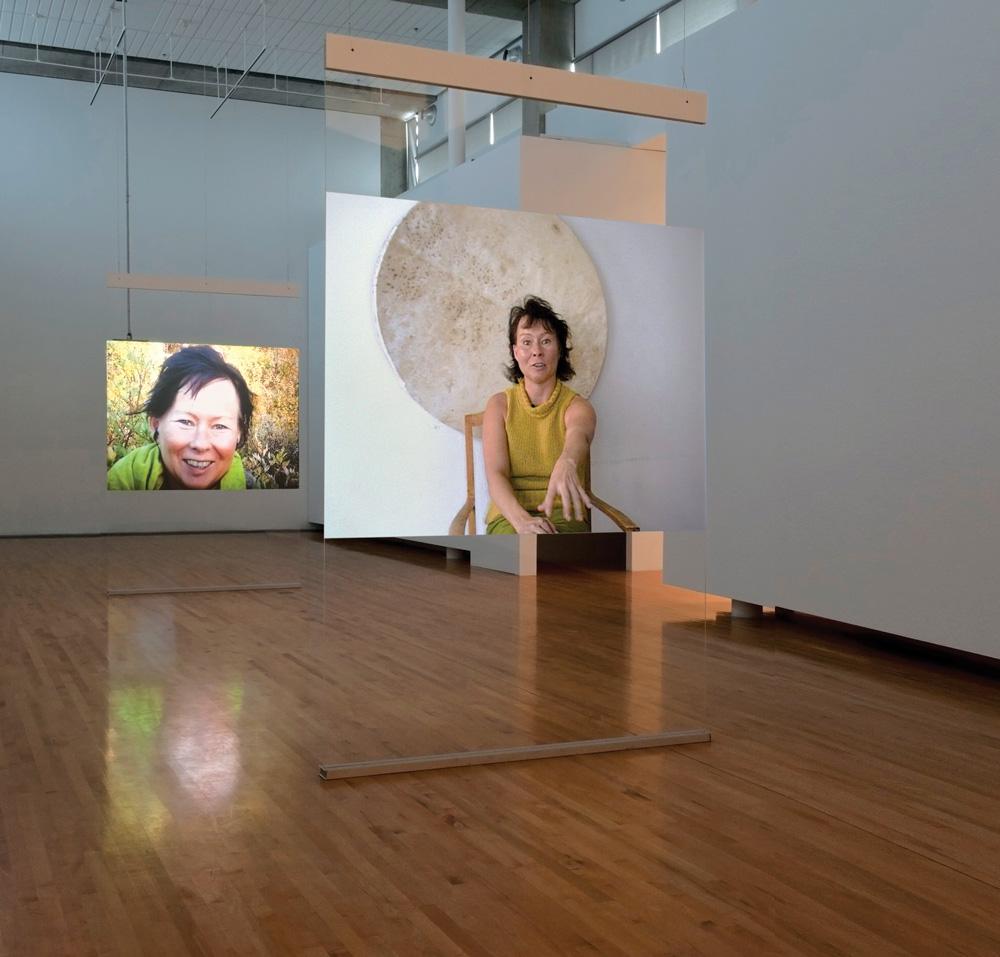Åsa Simma dislikes museums. They are cold, she tells the viewer; everything feels “locked-in,” “preserved.” Simma is the subject of WHITE-OUT: Between Telling and Listening (2002), an installation by the Paris- and Cortes Island–based artist Esther Shalev-Gerz, co-curated by Annette Hurtig and Charo Neville. In the first of two opposing 40-minute videos, Simma speaks from her Stockholm home, before a reindeer-skin drum; in the second video, she is in the windy outdoors, 1,000 kilometres north in Karesuando, listening through earbuds to what she told the camera six days earlier, her face tightly framed, the flora alive behind her.
As a double portrait, WHITE-OUT is more than the telling of one’s life to its listening author. A series of Dibond “location” images and “source” texts—photos of the vault of Stockholm’s National Historical Museum interspersed with quotes from Swedish and Sami literature—were mounted in the gallery’s first space. These writings, “preserved” in the id of the museum archive, are read off-camera and off-mic by Shalev-Gerz to Simma, who responds with tales of Sami life, Swedish citizenry and the collision of the two. (A second work, Perpetuum Mobile [1998–2000], beckoned from another room, where a ten-franc coin, like or unlike the memory that the Euro has relegated it to, spun and faltered but never fell flat.)
Shalev-Gerz employs a similar interview strategy in Between Telling and Listening: Last Witnesses, Auschwitz 1945–2005 (2005), involving survivors of Nazi concentration camps. However, where Between Telling and Listening provides only gestural responses, WHITE-OUT generates a new text, in addition to its subject’s corresponding gestures. What is “telling” here, what allows WHITE-OUT its overtone, are the ostensible contradictions—a sad reminiscence greeted with a smile (of recognition?), a funny story met with a knit brow (Is this something I should be telling people?).
WHITE-OUT was included in a Shalev-Gerz survey two years ago at the Jeu de Paume, where it was viewed in relation to the artist’s other memory works. Yet to experience WHITE-OUT in Canada, where Aboriginal culture has achieved a level of symbolic resonance, is to find parallels with the confessions of the First Nations artists Dana Claxton and Skeena Reece. Either way, it is clear that Simma—who is Sami “wherever [she is] in the world”—identifies not as an alienated subject but as a European modernist (hello, Jimmie Durham!), someone who, like the memory specialists Hannah Arendt, Ingeborg Bachmann, Anselm Kiefer, W. G. Sebald and Shalev-Gerz herself, has “love for [her] chosen family,” whom she has met “through [her] work—as an artist.”
This is a review from the Fall 2012 issue of Canadian Art. To read more from this issue, please visit its table of contents.

 Esther Shalev-Gerz WHITE-OUT: Between Telling and Listening 2002 Detail / photo Scott Massey
Esther Shalev-Gerz WHITE-OUT: Between Telling and Listening 2002 Detail / photo Scott Massey







